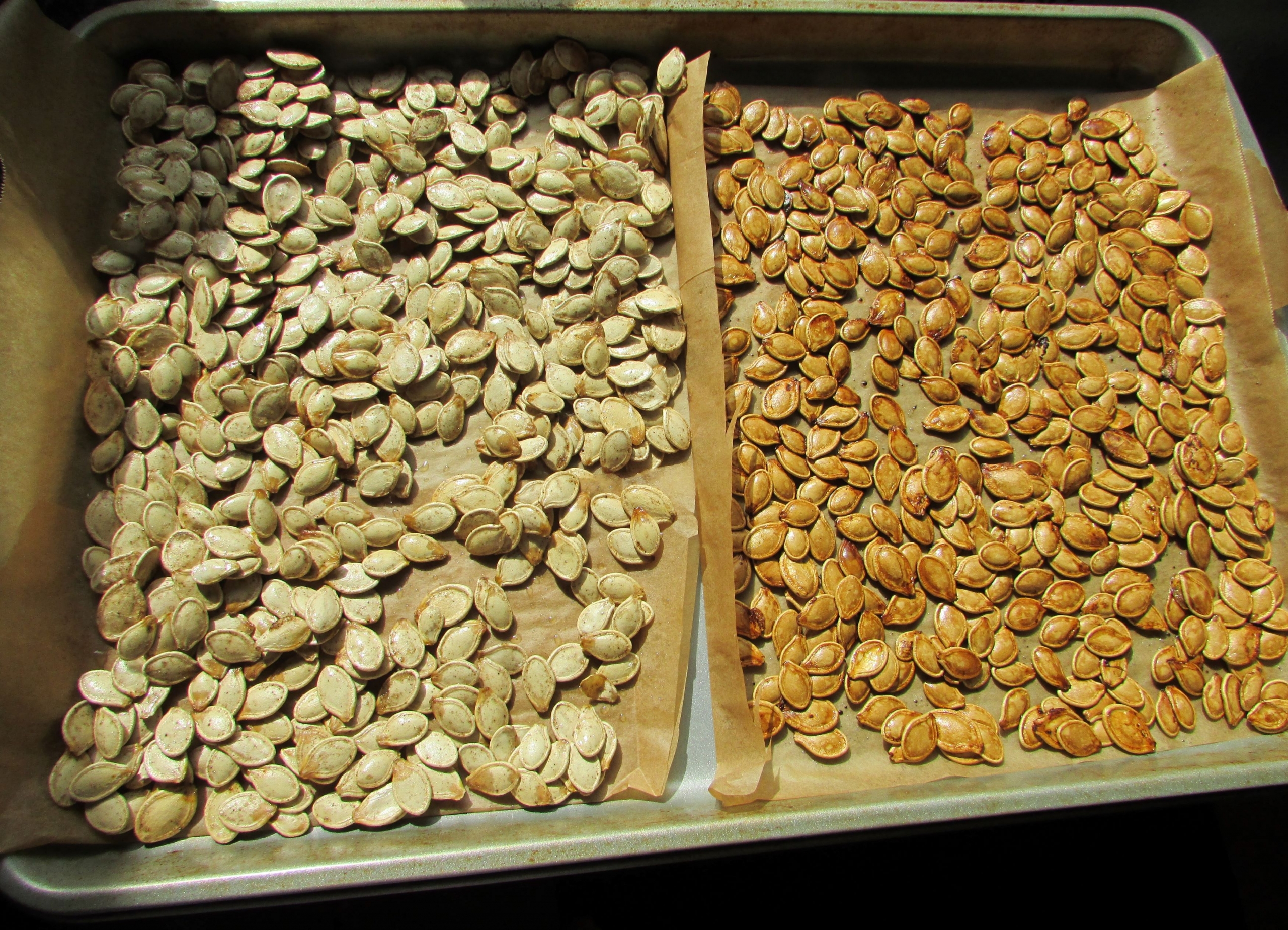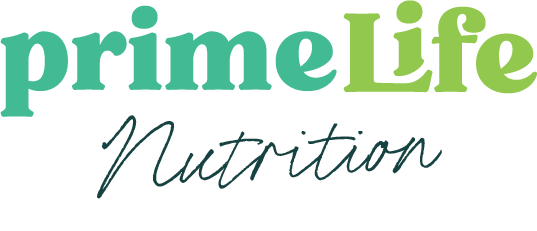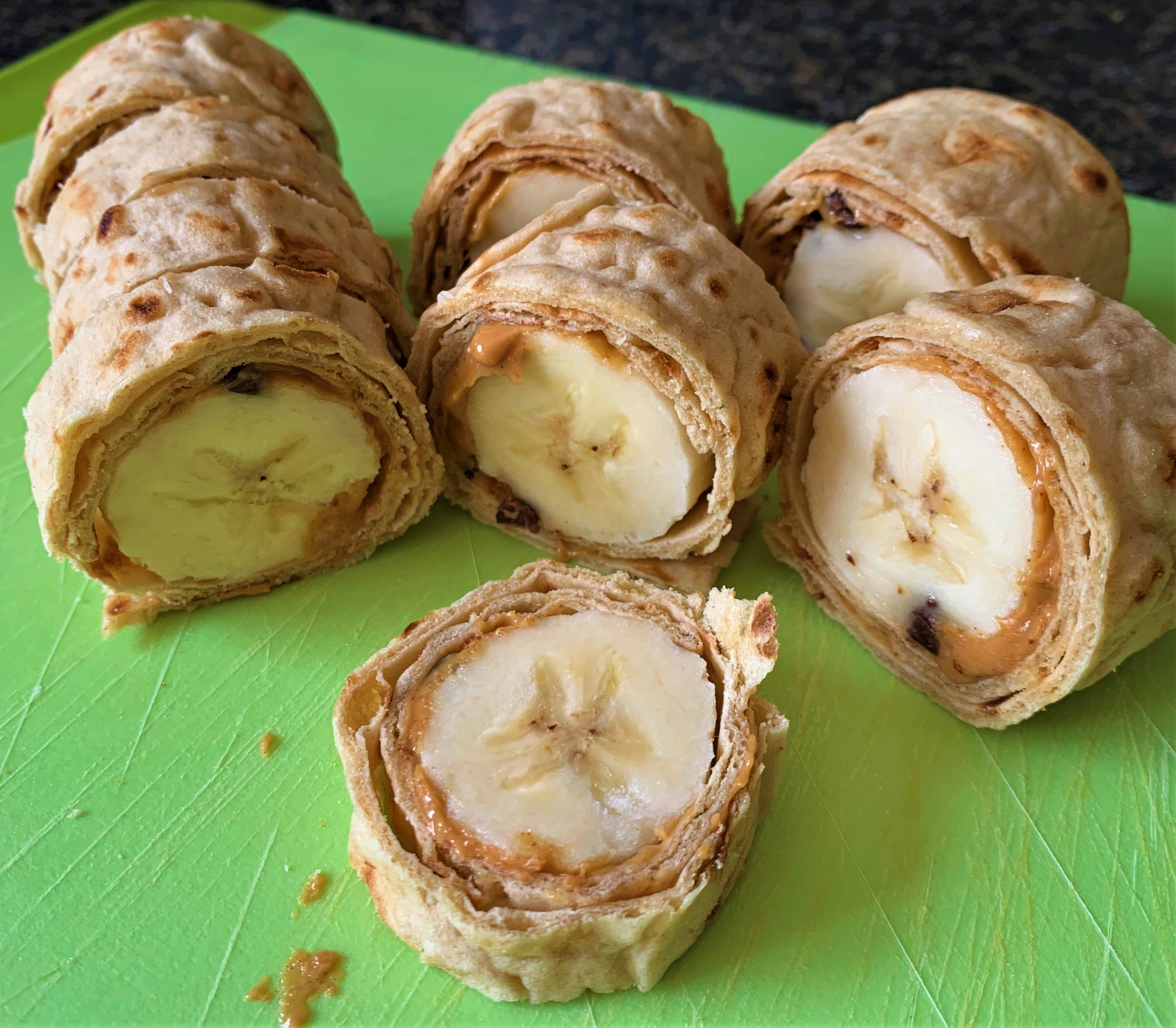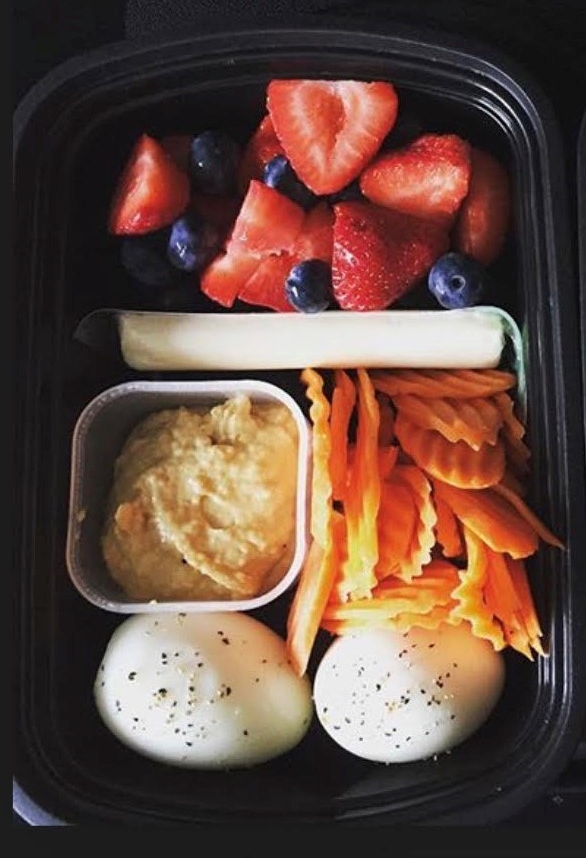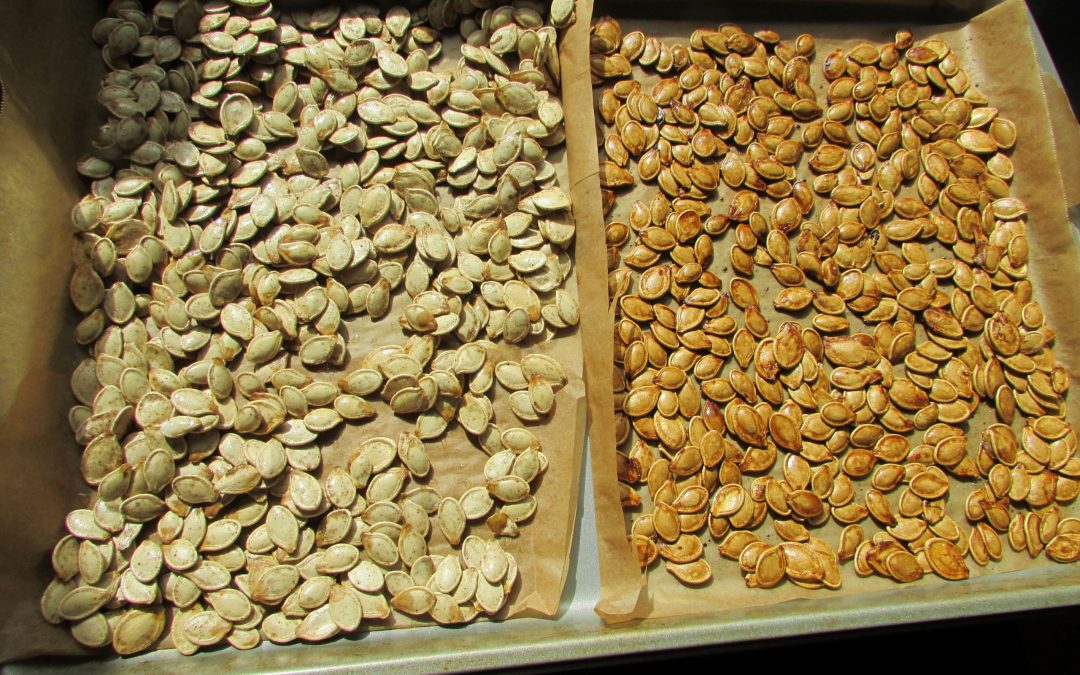
by Primelife Admin | Oct 15, 2020 | Recipes
- Pumpkin Seeds (extracted from 3 pumpkins)
- 1/2 tbsp olive oil
- 1 tsp salt
- 1 tsp pepper
- 1 tsp brown sugar
- 1 tsp maple extract
Separate pumpkin seeds from what I call “pumpkin guts” and rinse well in cool water in a colander. Make sure most of the pumpkin is off the seeds.
Preheat oven to 300⁰ and line cookie sheet with parchment paper, separated in the middle for both flavors.
Lay out a dish drying mat and lay pumpkin seeds in a single layer on mat.
Pat dry with paper towels and try to get as much moisture out of the seeds as possible.
In a bowl, combine olive oil, salt, pepper, half the amount of seeds, and mix.
In a separate bowl, combine brown sugar, maple extract, and the other half of the seeds and mix.
Lay out pumpkin seeds on cookie sheet, in a single layer.
Roast in oven for 45 minutes or until crispy.
Take out of oven and serve immediately!
Pumpkin seeds are a great snack since they offer up a great deal of protein fiber, and healthy fats. Sure, you can buy store-bought pumpkin seeds, but the sodium content in them is extremely high. Making them yourself allows you to control the sodium content.
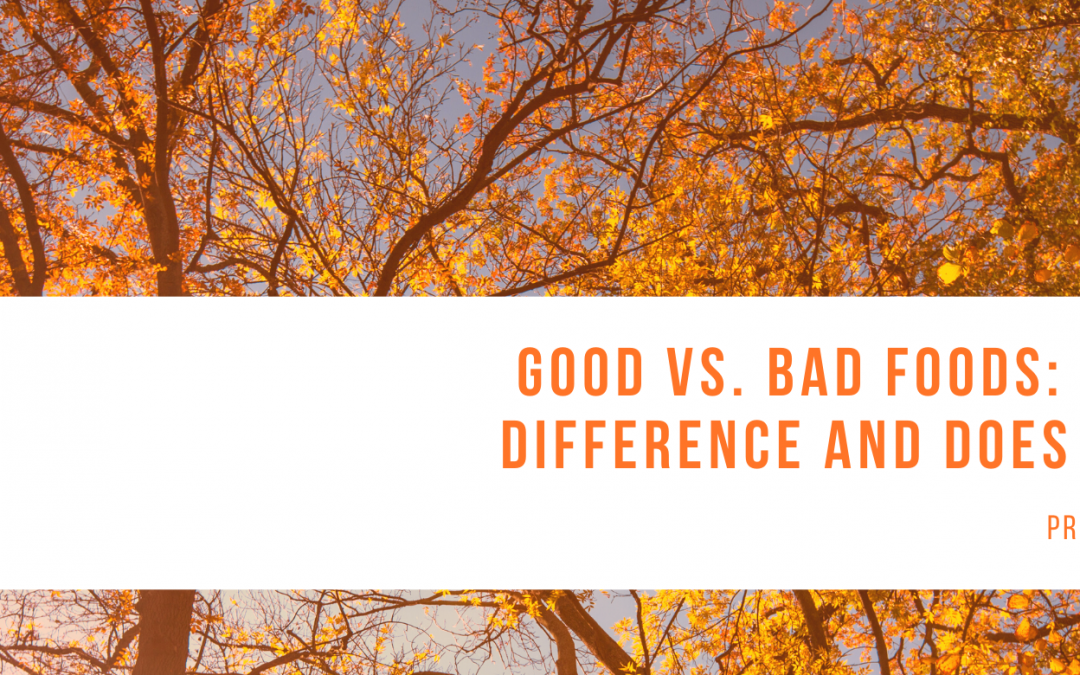
by Primelife Admin | Sep 24, 2020 | Featured, Meal Prep
I hear it ALL the time, “this food’s good for you” or “this food is bad for you”. But where do these definitions come from and why do we feel the need to place them in categories to make us feel a certain way about eating them? Defining a food as good or bad only puts the notion of how you’re going to feel after you eat a certain food. Are you going to feel good after eating a bagel and cream cheese if you consider it bad? Well, of course not if you’re defining these foods as bad. It’s time to throw away the idea that foods can be categorized as one thing or the other. It’s not about food being good or bad, it’s about what your body needs and wants and listening to it!
So let’s explore what we consider “good” and “bad”. After a fun little Facebook poll, I was able to see what you think makes a food good and bad.
Here are some answers for “good” foods:
- A food in its natural state
- Makes you feel good and does good things for you
- Grown from the Earth naturally
- Minimally processed
- You know where it’s coming from (ie; produce stand or butcher)
And here are the answers for “bad” foods:
- Makes you feel bad after you eat it
- Processed or injected with preservatives or dyes
- Fried or really heavy meals
- Foods high in sodium or fat
- Foods with a lot of ingredients or really shelf-stable
Now that we’ve identified the good and the bad, let’s throw this whole idea out and start thinking about foods differently. We need to stop villainizing foods and making ourselves feel guilty over eating certain foods. This pulls us away from listening to our bodies and eating intuitively, and closer to eating what we think we should eat rather than what we want to eat.
In order to allow ourselves to stop categorizing foods, you need to start thinking about the foods you genuinely enjoy and how to incorporate them into your day to day. If you love mac and cheese (like me), it shouldn’t be something that you’re afraid to eat or only eat on special occasions. It should be a food that you have when you want it, and get satisfaction from. Allowing yourself to enjoy the foods you love can help limit the feeling of needing to over eat that food. The more you restrict, the more you want it; so why deprive yourself? Every fad diet out there will give you a list of “no” foods and a list of “yes” foods. All this does is reinforce the categorizing of good and bad foods.
We give food way too much power than it deserves. We allow it to adjust our social life, make us feel restricted, and sometimes even affect the relationships we have with others. If you want to stop feeling so powerless towards dieting, you have to take the power for yourself. Stop being afraid of foods and start loving foods. Be comfortable, happy and confident with the choices you make. The more intuition you put into eating, the more empowered you feel and the more you’ll want to eat foods that make you feel better as a whole.
Eating intuitively takes time, patience, and lots of rewiring our brains. Working with a Registered Dietitian can help you plan, strategize, and ensure you’re not overwhelmed with changing the way you see foods. Just remember that no one food is going to sabotage your hard work and the less stress you put on yourself, the easier the transition will be.
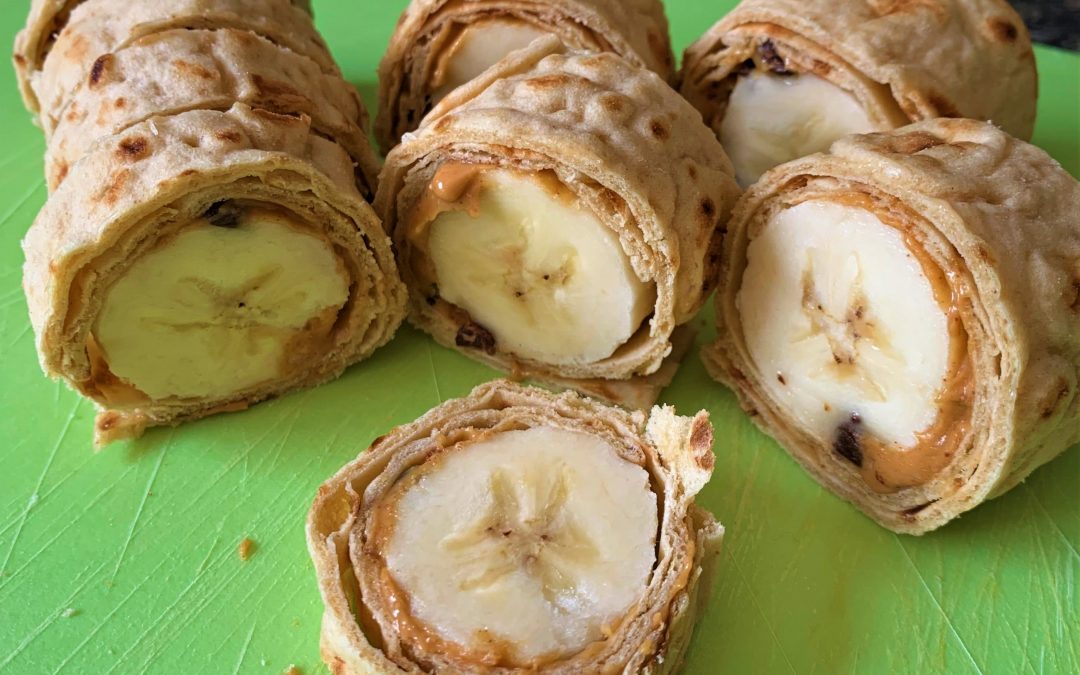
by Primelife Admin | Aug 28, 2020 | Recipes
- 1 whole wheat wrap
- 1 banana
- 2 tbsp natural peanut butter
- 1 tbsp chocolate chips
Place wrap on a cutting board and spread wrap with peanut butter, spreading on only the left or right side of the wrap. Use a small dab of peanut butter on the opposite side of the wrap to help it stay closed once you roll it up.
Top peanut butter with chocolate chips, banana, roll it up and cut up into bite-sized pieces for a perfect, kid-friendly snack!
Use other fun toppings like rice krispies cereal, berries, or chia seeds to add a crunch and different flavor to your sushi.
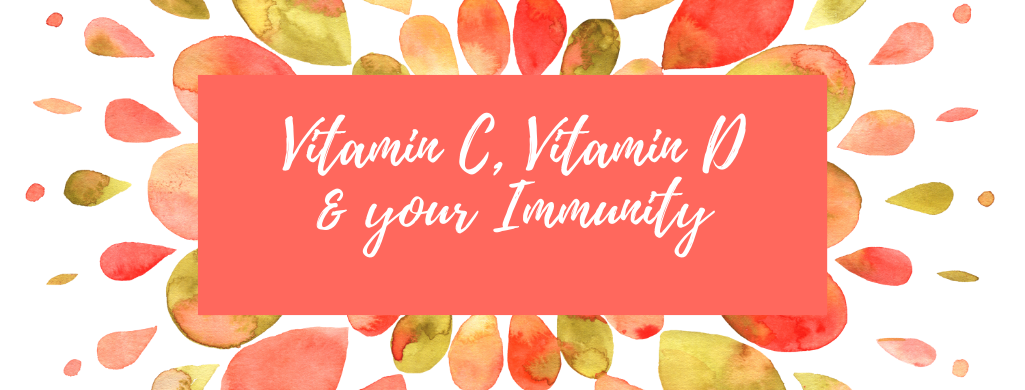
by Primelife Admin | Aug 17, 2020 | Food Science, News
Your New Best Friends for Immune Health–Vitamin C and Vitamin D
In these times of COVID-19, we are becoming more aware and knowledgeable about how illnesses spread. We know that it is important to wash our hands, refrain from sharing drinks, and be cautious of our distance between our friends and family–But how do you set your body up for success when you DO come into contact with germs? Vitamin C and Vitamin D have your back.
Vitamin C Immunity Benefits
Vitamin C is an antioxidant and plays a major role in the growth and repair of our bodies. It prepares your body to fight and then speeds up your recovery if you do end up getting sick. In other words, paying more attention to getting Vitamin C into your diet can decrease the length of time you are sick for, allowing you to recover faster and get back on track.
How can I get Vitamin C?
Vitamin C must be consumed through food because it cannot be produced by your body. Great sources of Vitamin C include fruits and vegetables such as citrus fruits, tomatoes, potatoes, strawberries, green and red bell peppers, broccoli, brussels sprouts, and kiwi. Many of these foods can be enjoyed cooked as well as raw. If you do decide to cook your fruit/veggie, be cautious around how long the food is being cooked for and how high the heat is. Too much heat for long periods of time can decrease nutrients in the food. Microwaving or steaming are good options to minimize nutrient loss while still achieving the desired texture of a cooked food.
Vitamin D Immunity Benefits
A lack of Vitamin D has been proven to correlate with an increased risk for infection. In fact, Vitamin D used to be used to fight tuberculosis before antibiotics were created! This is because Vitamin D is expressed on your immune cells. Vitamin D decreases inflammatory processes, increases antiinflammatory processes, and helps the body better absorb minerals such as calcium and phosphorus.
How can I get Vitamin D?
Your main source of Vitamin D is the sunshine! Try getting out of the house when taking a break from work for just 15-20 minutes to soak up the sun on your bare skin. Spending well over this amount of time without sunscreen or protective clothing on is Vitamin D overkill and can increase risk for burns. It may sound simple to get your daily Vitamin D dose, but over half of the world is deficient because most daily routines in this day and age require us to be inside. Vitamin D can also be absorbed through food, but these food sources are not common or accessible to many. Vitamin D rich foods are cod liver oil, salmon, swordfish, tuna fish, orange juice fortified with Vitamin D, milks fortified with Vitamin D, sardines, and beef liver.
Should I supplement Vitamin C and/or D to make sure I am getting enough?
It is recommended to focus on getting nutrients from food sources (food and sun in the case of Vitamin D) before supplementing. Look back at the food sources for Vitamin C and Vitamin D and choose a few that you would enjoy eating. If you enjoy it, you’re more likely to be consistent. Supplementation should fill in the gaps. However, research has shown that half of the world is not able to get enough Vitamin D from food and sunshine. Therefore, many could benefit greatly from taking a supplement. It is important to talk to your dietitian or doctor to make sure you are getting the correct amounts for you.
- Written by Tara Greenwood, Penn State University Nutrition & Dietetics Student

by Primelife Admin | Jul 29, 2020 | Recipes
- 2 eggs, hard boiled
- 1/4 cup hummus (flavor of your choosing)
- 3/4 cup raw vegetables (carrots, celery, cucumber)
- 1 cheesestick (mozzarella, cheddar)
- 1/2 cup berries
Place 2 hard boiled eggs in lunch container. Add in hummus cup, raw veggies, cheesestick and fruit.
Repeat with as many containers as needed for lunches or dinner for the week.
Refrigerate and enjoy!
Feel free to switch up the fruit, veggies and cheesestick you use to give yourself variety and change up the flavors.

